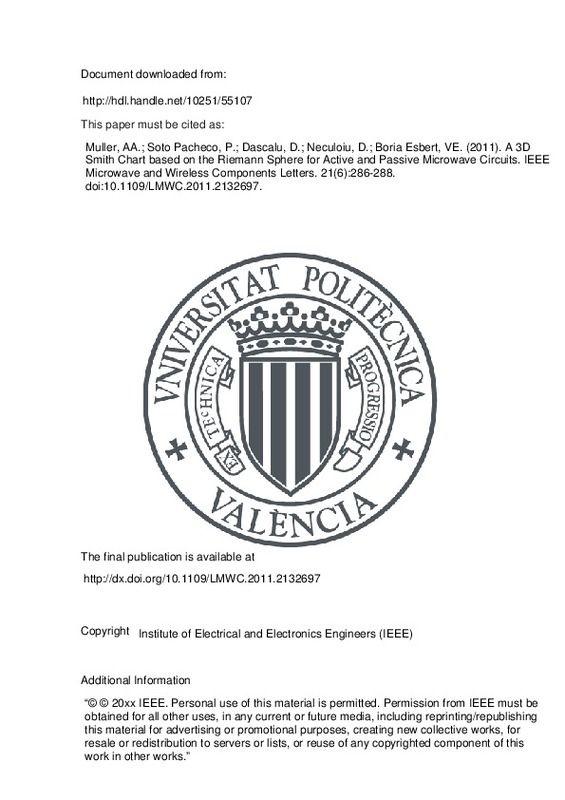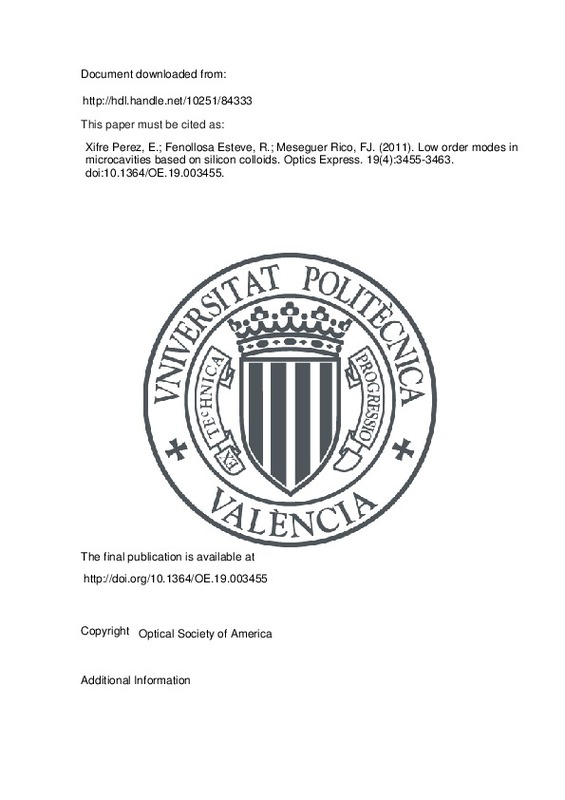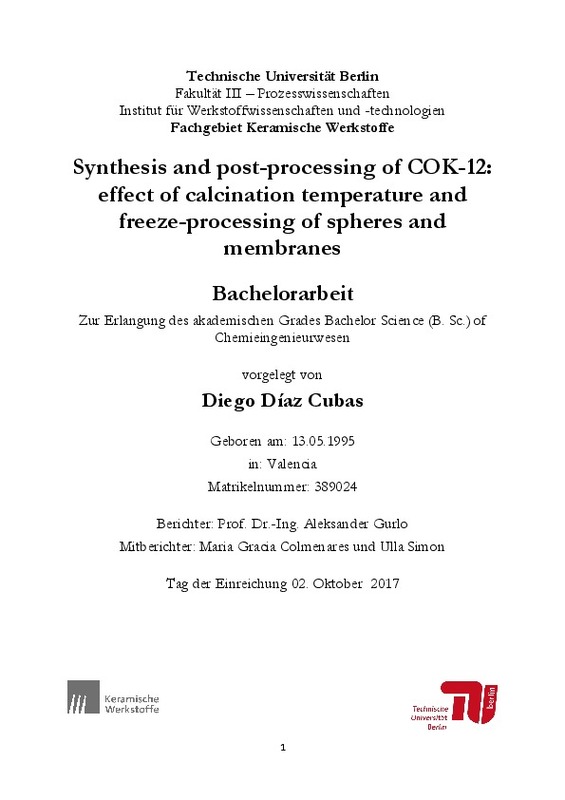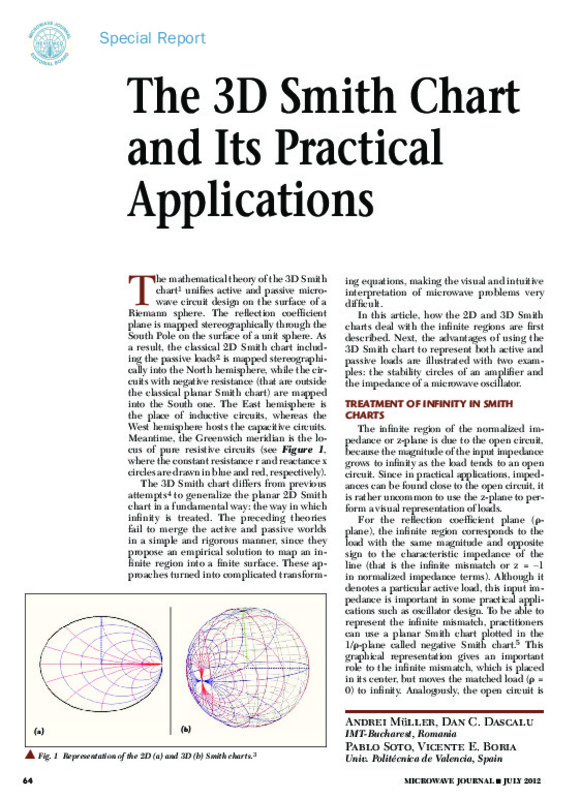

Listar por palabra clave "Spheres"
RiuNet: Repositorio Institucional de la Universidad Politécnica de Valencia
- RiuNet repositorio UPV
- :
- Listar por palabra clave
JavaScript is disabled for your browser. Some features of this site may not work without it.
Buscar en RiuNet
Listar
Mi cuenta
Ayuda RiuNet
Admin. UPV
Listar por palabra clave "Spheres"
Mostrando ítems 1-8 de 8
-
Muller, Andrei A.; Soto Pacheco, Pablo; Dascalu, Dan; Neculoiu, Dan; Boria Esbert, Vicente Enrique (Institute of Electrical and Electronics Engineers (IEEE), 2011-06)This letter proposes a spherical 3-D Smith Chart suitable for representing both active and passive microwave circuits. Using the mathematical concept of the Riemann sphere, the extended reflection coefficient plane is ...
-
Muñoz Castells, Raquel (Universitat Politècnica de València, 2020-10-15)[ES] Posidonia oceanica, planta endémica del litoral mediterráneo, da lugar a unas estructuras denominadas esferas de posidonia las cuales, a pesar de su importancia para el ecosistema costero, se encuentran poco estudiadas ...
-
Cebrián Lloret, Vera (Universitat Politècnica de València, 2017-07-18)[ES] En el presente trabajo se estudia el proceso de elaboración de un nuevo producto alimentario utilizando como base dos tipos diferentes de microalgas -Chlorella vulgaris y Arthrospira platensis-, elegidas debido a ...
-
Xifre Perez, Elisabet; Fenollosa Esteve, Roberto; Meseguer Rico, Francisco Javier (Optical Society of America, 2011-02-14)[EN] Silicon colloids based microcavities, with sphere size between 1 and 3 micrometers, have been synthesized and optically characterized. Due to both the small cavity volume and the high refractive index of silicon we ...
-
Perczel, Janos; García Meca, Carlos; Leonhardt, Ulf (IOP Publishing, 2011-07)Some interesting optical instruments such as the Eaton lens and the invisible sphere require singularities of the refractive index for their implementation. We show how to transmute those singularities into harmless ...
-
Gracia Calandin, Luis Ignacio; Angeles, J. (SAGE Publications, 2011)A robust approach to computational kinematics intended to cope with algorithmic singularities is introduced in this article. The approach is based on the reduction of the original system of equations to a subsystem of ...
-
Díaz Cubas, Diego (Universitat Politècnica de València, 2020-03-26)[ES] Los materiales de sílice mesoporosos ordenados, también llamados OMS, son un grupo de nanomateriales de sílice con poros ordenados, cuyo tamaño puede ser de 2 a 50 nm. Se han utilizado mucho desde 1990 en varios campos, ...
-
Mueller, Andrei; Dascalu, Dan C.; Soto Pacheco, Pablo; Boria Esbert, Vicente Enrique (2012-07)
Mostrando ítems 1-8 de 8

Universitat Politècnica de València. Unidad de Documentación Científica de la Biblioteca (+34) 96 387 70 85 · RiuNet@bib.upv.es









